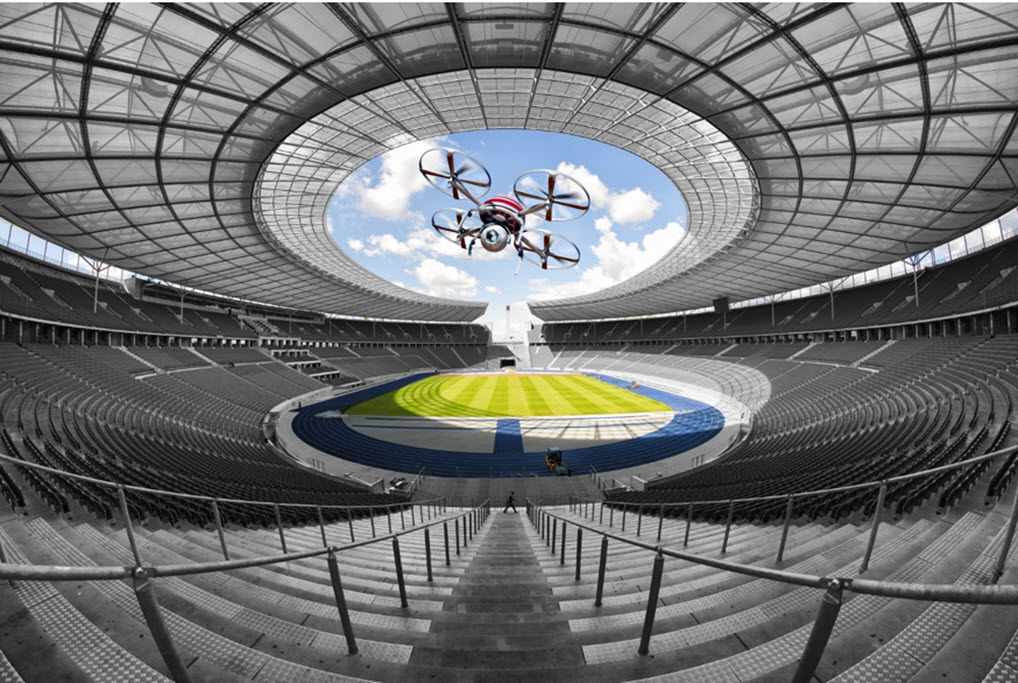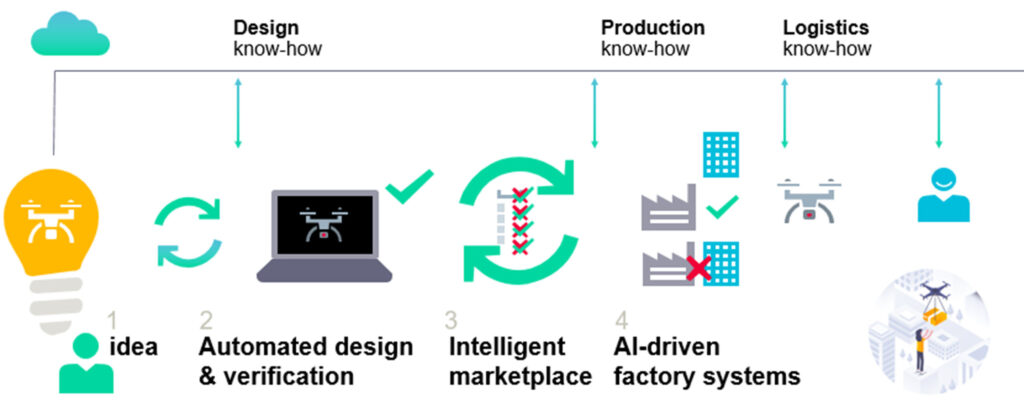Computer: Make me a drone

Imagine the day that you can address your computer (or smartphone), tell it what you want to create and then have the product appear at your doorstep a few days later. The conversation could go like this:
[You] Computer, make me a drone.
[Computer] What type of drone do you need?
[You] I need a drone to take aerial videos of sporting events. It needs to fly for 120 minutes between charges, take HD-quality video footage, fly with very little interaction from me and cost $400 or less.
[Computer] Here are the best 3 matches to your request. Please select one.
[You] I will take option 2.
[Computer] Your drone will ship to the address associated with your account in 8 days.
Recently, Stefan Jockusch presented the Siemens vision for the future of manufacturing at the EmTech Digital conference (see this blog for a summary of the whole conference). In it, he covered the “Make me a drone” scenario which is a nice vehicle for presenting our vision for the future.
The conversation with the computer actually specifies hard parameters due to the statement, ”fly with very little interaction from me,” such as drone stabilization, programmable routes and the ability to automatically return to a launch point. It also specifies some inferred parameters due to the statement, “sporting events,” like it must be quiet and avoid structures and people. But, after interacting with the computer, your ideal drone might not be on the market today. However, imagine that we have a knowledge base of thousands of designs and AI-driven software that goes off and analyzes those designs with similar parameters until a small set of results is presented to you.

Next, the design and analysis software creates and verifies the design, adding any missing features and then creating a materials list. The system then sources the components and finds a manufacturer. For this, it uses a platform we call the Intelligent Marketplace. The sellers can offer anything from production know-how to manufacturing services in a way that the software can automatically validate and match it. In the end, you get an offer with a cost and delivery time and once you accept it and pay, the product is automatically made and shipped to you.
Does this sound like science fiction to you? This dream seems impossible to accomplish today, but visions have to be big and bold in order to drive real innovation. Because Siemens Digital Industries Software (DISW) uniquely enables electronic and mechanical design and verification all the way through to manufacturing, we can approach this problem like no other company can. One thing that we like to do at Siemens is to imagine the world of design and manufacturing 10 or 20 years from now and then work backwards to figure out what new solutions we need to start developing now to make the vision real. “Make me a drone” is not science fiction because many of the required solutions are already available or deep into research and development phases. Here is a sampling:
- AI enabled design space exploration. Use AI to accelerate design creation. For example, in the Integrated Circuits (IC) space, our tools can find problems in a design using machine learning running on a large database of similar designs. We also employ machine learning to drastically reduce th simulation solution space, saving time and money.
- Generative design. Let the computer invent the best geometry of drone parts by employing AI-driven simulation techniques. Often this generates a part that you would never think of. Then, use the result to drive a 3D printer to create the parts.
- Multi-discipline simulation and analysis. A drone includes software, electronic parts on a board that are wired to sensors and cameras and mechanical moving parts, all driven by a battery. This requires multiple simulations in many design domains and bringing the results together for analysis of the complete drone.
- Human-robot interaction. We have technology that programs virtual fences between humans and robots on the factory floor for safety and we employ AI technology for programming robot movement and positioning.
- Intelligent marketplaces. Use AI technology to find the factory that has the materials and equipment to manufacture the drone. Or, facilitate creation of subsystems and bid them out to another factory. The system might also need to route the subsystems to a final assembly factory. Intelligent marketplaces interface with services that collect your money, route payment to the factories, and then pay for shipping your drone back to you.
Every one of the product and research areas here represents a basic technology to build out the vision. While this might take several years to complete, these AI-enabled technologies are already helping to solve increasingly complex design tasks in a much more automated way.



